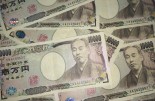Swissquote Bank: BoJ hints it will finally exit negative interest
Swissquote Bank: BoJ hints it will finally exit negative interest

Speculation is that the BoJ will hike rates as soon as this month … Japan might normalize its monetary policy just when its economy begins to slow down.
‘Yesterday was finally the day that most FX traders have been waiting for since at least a year: the day where the Bank of Japan (BoJ) gave a hint that it will finally exit its negative interest rate policy,’ says Ipek Ozkardeskaya, Senior Analyst at Swissquote Bank, today. ‘The BoJ Governor said, after his meeting with the Japanese PM, that handling of monetary policy would get tougher from the end of the year. Indeed, the BoJ is buying a spectacular quantity of JGBs to keep the YCC intact at absurdly low levels compared with where the rest of the developed markets yields are following an almost 2-year long of aggressive monetary policy tightening campaign. At its highest this year – after the BoJ relaxed the rules on its YCC policy – the 10-year JGB flirted with the 1% mark, whereas the 10-year yield German bund yield hit 3%, the 10-year British gilt yield advanced to 4.70% and the US 10-year yield hit 5%. Certainly, inflation in Japan lagged significantly behind inflation in Western peers, yet inflation in the US is now exactly where inflation in Japan is: near 3%.’
‘The BoJ’s negative rate is the last souvenir of the zero/negative rate era and any small hint that things will get moving over there could move oceans. And this is what happened yesterday. The speculation that the BoJ will hike rates as soon as this month spiked to 45% soon after Mr. Kuroda’s words reached investors ears. The 10-year JGB yield spiked to 0.80% from around 0.62% reached earlier this week in parallel with the falling DM yields. The USDJPY fell from 147 to 141 in a single move, and the pair is consolidating gains a touch below 144 this morning, as traders argue whether a December normalization is too soon or not. Fundamentally it is not: in all cases, the BoJ will start normalizing policy two years after the Bank of England hiked its rate for the first time after a long period. And the BoJ will be normalizing its rates when all major central banks plateaued their tightening policy and when investors are out guessing when the normalization – toward the other direction – will begin. So no, fundamentally, it is not too early for the BoJ to start hiking its policy rate.’
‘In any case, it is more likely than not that the fortunes of the Japanese yen turned for good this week. In the short run, consolidation is the immediate answer to yesterday’s kneejerk rally – which took the USDJPY immediately into the oversold market conditions as the move was also amplified with many traders covering their short positions. But from here, yen traders will be looking to sell the tops rather than to buy to dips. A sustainable move below 142.60 – the major 38.2% Fibonacci retracement on this year’s bullish trend – will confirm a return to the bearish consolidation zone, then the pair will likely take out the next major technical supports: the 200-DMA near 142.30, the next psychological support at 140 and should gently head back to – at least around 127 – where it started the year. But these forecasts will hold only, and if only, the BoJ doesn’t make a sudden U-turn on its normalization plans. Remember, the BoJ didn’t say it would normalize. It just said that it will be hard to handle the actual policy for longer. If one were to imagine, Governor Kuroda maybe spent last night looking at the ceiling and wondering ‘what have I said!’. Funny thing is, the BoJ’s rate normalization speculation comes a few hours before the country revealed a 2% fall in its GDP; obviously, the global policy tightening has been hard on the world economy, and Japan can’t avoid the global slowdown winds. If it turns out, Japan might normalize its monetary policy when its economy begins to slow down.’





